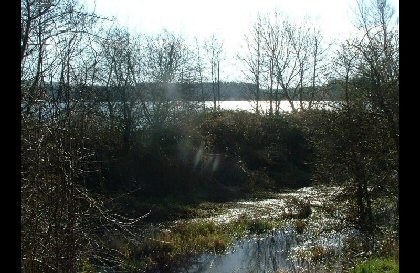There was a time when you could purchase a good blackthorn walking stick in many village or town shops. Not so any longer.
I would be too embarrassed to tell you what I paid in Omeath for one such as a birthday present for my friend. And that after a protracted search!
I was tempted to seek out and make my own.
The master, Michael J Murphy described what was required.
The blackthorn, he pointed out, is a more aristocratic, more solid and more graceful stick than the ubiquitous ash plant, favoured by cattle-dealers (and in bygone days, by persons with vindictive, malicious intentions!). It offers to the walker quite a different feeling and mien. The blackthorn needs attention and care when maturing; the ash-plant very little.
You have got to spot your blackthorn in the hedge many years before cutting it! The really fastidious will cut away any surrounding shoots that will tend to impede its growth. All close sprouts must be cut away, of course! Otherwise the autumn gales might mark and scar the bark of the prospective stick and may cause an incision known as a ‘windgall’ that will spoil its final appearance.
Select a stick that will have part of the root for a knob. Under no circumstances forget that portion to be grasped by the hand. Cut the stick in winter when the bark has tightened, to eliminate excessive risk in the final polishing of ugly creases due to shrinking.
Having cut the stick – preferably with a small saw – leave plenty of the root from which the knob is to be fashioned. The stick should be about three feet in length, but as this obviously varies according to the height of the individual, a test can be made with a stick already in his possession. It is then stored in a dry place for a month. Long ago it was hung down the chimney.
The next phase is to straighten any bends in the stick as it is almost impossible to get one really straight. It must be thoroughly rubbed with bacon fat, especially where the bend is, and then held to a fire until the fat melts and soaks in. Repeat this process until the stick becomes somewhat flexible. Then straighten it by bending it across your knee and against the twist. Repeat this until the stick keeps its new position. If it still keeps its old position, wrap it in heavy cloths and use weights for a night or two to bend it.
To prepare the stick for polishing, thoroughly scrub it with a wet scrubbing brush dipped in coal ash. When cleaned the thorns are then trimmed neatly according to taste. The knob is fashioned with a small knife and sandpaper. The end is grooved to take the ferrule. A rasp may be used on the knob, finishing with sand or emery paper. The whole stick is then given a rub with emery paper and is then ready for polishing.
It is advisable to work on the stick first with a velvet pad to induce a preliminary shine which helps the brilliant surface for varnishing.
Two or three coats of varnish may be applied but always hang the stick in a dust-proof place until one coat is applied, before applying the next. Some men bore holes in their stick and add more thorns, cut from other sprouts, of course.
To make a twisted stick – two plaits – one must train the twin shoots very early in their growth and twist them gradually as they grow and mature.
On second thoughts, I may have got a bargain in Omeath.
The very idea of making my own has suddenly gone off me!

1 thought on “Making your own Blackthorn”